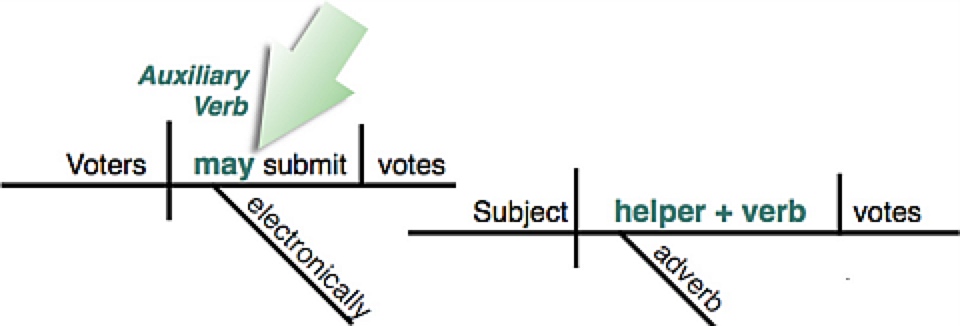
Karl J Sherlock
Associate Professor, English
Email: karl.sherlock@gcccd.edu
Phone: 619-644-7871
Ever wonder what that connection is for on your stereo amp with the letters "AUX" under it? Maybe you've found a port at the back of your flat screen TV that's labeled "Auxiliary"? Maybe you've heard of something like the Ladies Auxiliary Fire Brigade? In all cases, the word "auxiliary" suggests a supportive role, whether it's an peripheral device or a supportive service. The auxiliary aspect adds more function and character to the whole system. This explains the role of the auxiliary verb as well. In fact, auxiliary verbs are more commonly known as "helping verbs" and "modal verbs."

Auxiliary verbs are used in conjunction with main verbs to express shades of time (i.e., verb tense) and mood:
The combination of helping verbs with main verbs creates what are called "verb phrases" or verb strings. In the following paragraph, the verb strings are underlined and the helping or auxiliary verbs are in bold :
Observe how some verb strings are broken up. This is typical in certain conditions:
One type of helping verb is called a modal auxiliary (or, just "modal"). Another way of thinking about modes is as moods or methods—modalities. These are used to add conditions or meaning to verbs and are always followed by the base verb form. The modal verbs include:
In this example, the word "can" adds the meaning that she is capable of writing well.
When diagramming helping verbs, you should keep them together with the base verb, regardless if the verb string is broken up by other words:

Karl J Sherlock
Associate Professor, English
Email: karl.sherlock@gcccd.edu
Phone: 619-644-7871

8800 Grossmont College Drive
El Cajon, California 92020
619-644-7000
Accessibility
Social Media Accounts